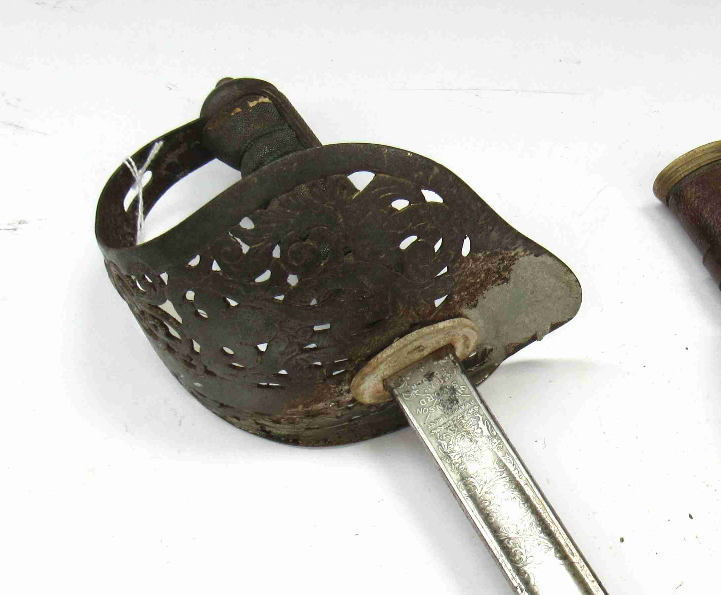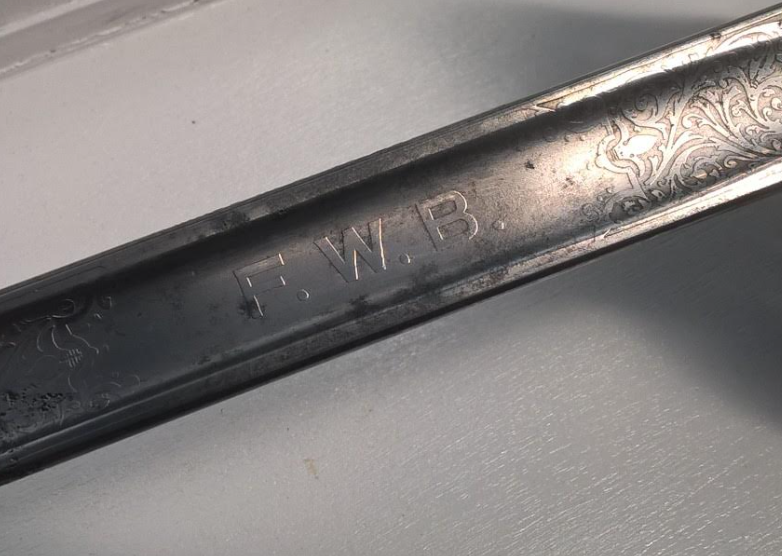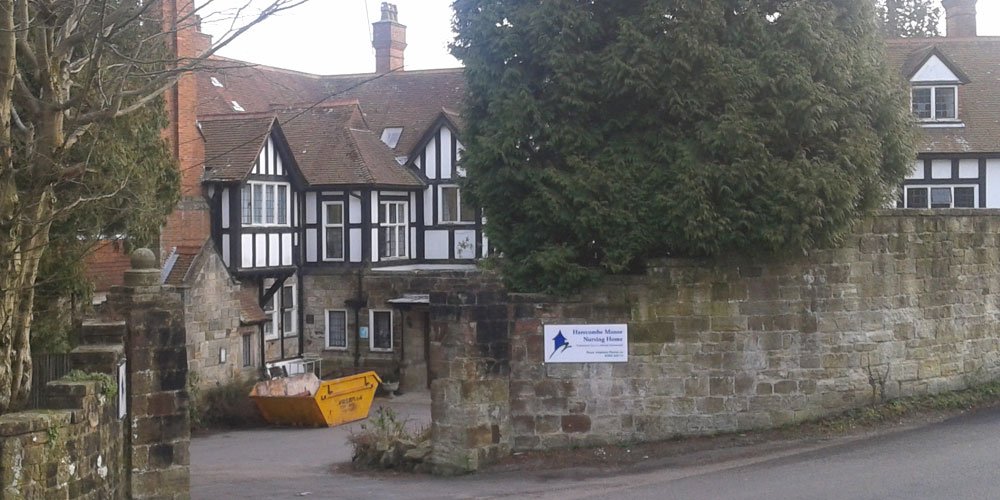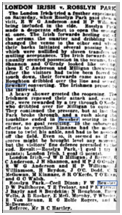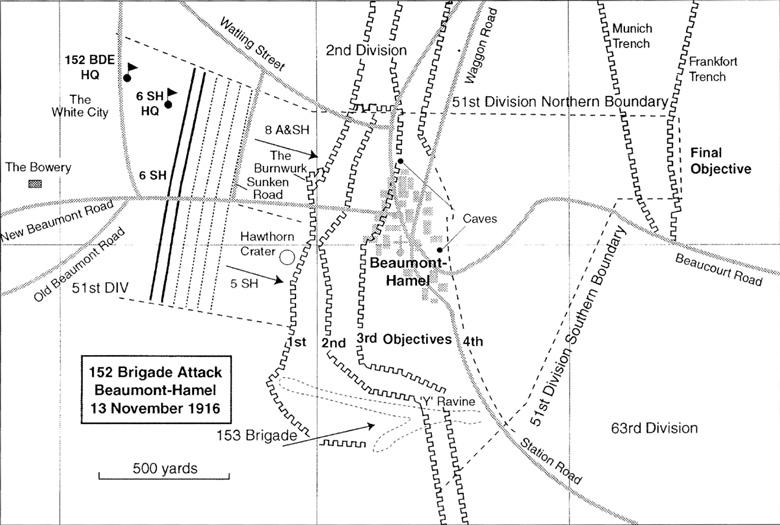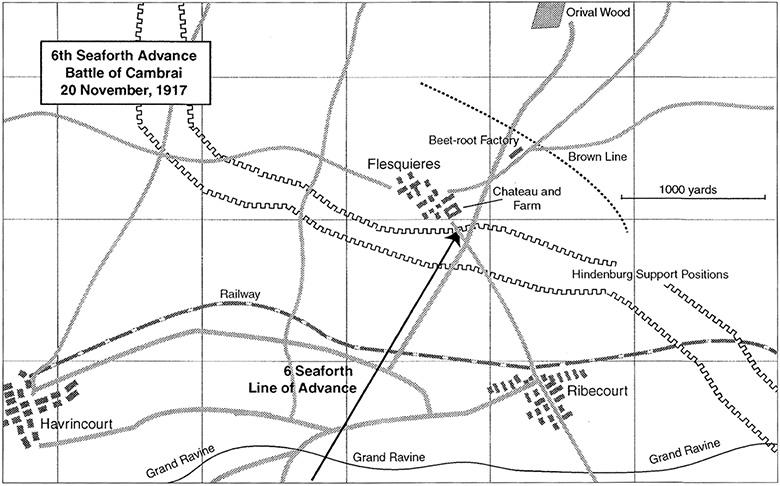This will be an ongoing thread for a bit.
#sword

What's your guess? Winner gets a nod!
iwm.org.uk/collections/it…

Side info. Headley suffered a riot in 1830! The aftermath provides a #wellingtonwednesday @mcribbHistory
Shop in 1955.

There must be some Merton college war record???

discovery.nationalarchives.gov.uk/details/r/D630…

And a nice page on the evolution of nursing uniforms during WW1: scarletfinders.co.uk/157.html
#nurses


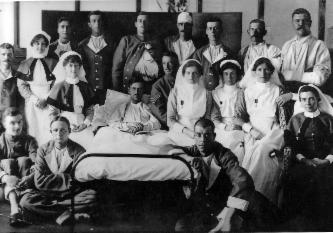
.
.
.
Wow! You could get a plumber round for £33!
Calculator is at the National archives :)
nationalarchives.gov.uk/currency-conve…
#inflation


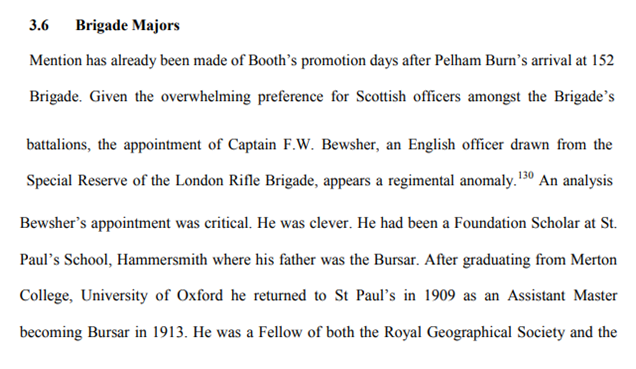


abebooks.co.uk/servlet/Search…
1886-1950
Merton Oxford '05-09
Joins (T) Army '09
Marries Eira '13
Writes History books
War! Joins General Staff
Joins 51st H'land div on frontline.
Awarded MC '17 DSO '19
Made Companion? CBE?? '19
At HQ 1920
Eira dies 1920
.
.
.
.
.
#fredbewsher
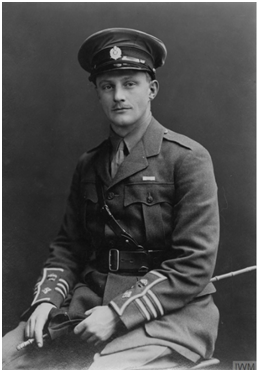
This is Fred Bewshers school sports day report from 1899! @StPaulsSchool
#fredbewsher

In 1908 he plays in a trial match(i think) for @rosslynpark Rugby club versus Old Bedfordians.

@rosslynpark
team again. Here he is listed for a game in December! Remember this was back when Decembers were proper Decembers! Not like the ones now.



#fredbewsher




#fredbewsher
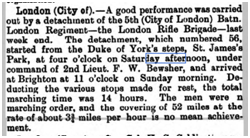



#fredbewsher

It was here that Fred joined them months later. The Somme was now far from quiet.
#fredbewsher #thesomme

3500 casualties later they called a stalemate.
A baptism of Fire. Later Fred writes this of it:
#fredbewsher

51hd.co.uk/history/battle…
On the 13th of November at 5.45am a mine was detonated under the German positions and an intense barrage opened up. The Highlanders went over the top.
The 51st move forward to their assembly trenches. The Canadians are to their left. The pals battalions of the Industrial north are to their right
Ahead is Vimy ridge.
#fredbewsher
He claims two spotter planes that day. His 38&39th kills. One of the planes, a Be 2g crashes into the area ahead of the 51st.
2/Lt. Keith Ingleby MacKenzie and 2/Lt. Guy Everingham are killed.
#fredbewsher

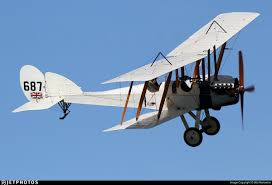
At exactly 5.30 a.m. the British bombardment intensified to a crescendo as every artillery piece fired onto the German positions and machine-guns joined in the barrage.
1830 hours: 154 Brigade reported it had reached Brown line. In fact 154 Brigade had been mistaken and had capture a position (Tommy Trench) several hundred yards west of the objective and had to work back in.
Read more: 51hd.co.uk/history/battle…
Some scenes from Beaumont Hamel.
net.lib.byu.edu/estu/wwi/memoi…


On 4th June 1917 Fred is awarded the Military Cross! Second highest honour! His award was announced as part of a much larger batch and so sadly there is no citation :(
#fredbewsherMC

Read more: 51hd.co.uk/history/the_th…
By 6.40 A.M. the Black outpost line was captured on the whole battalion front.
net.lib.byu.edu/estu/wwi/memoi…

Private George Mcintosh wins the Victoria Cross.
51hd.co.uk/accounts/pvt_m…
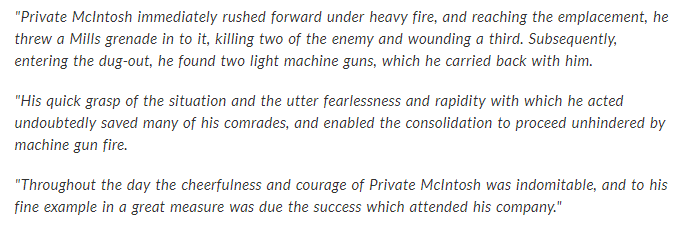

Read more here: 51hd.co.uk/history/the_th…

Tried to find a related picture of them. Nada :(
The Battle began with a 24 hour bombardment of the German trenches and wire. 32 machine guns also joined in by attacking distant pillboxes and fortified farmhouses.
11.45 A.M. & 12.30 PM - The Gordon Highlanders are attacked. Germans forced back by flank fire.
Meanwhile the leaderless Gordons had rallied and re-armed and joined up with the Argyle and Sutherlands. Together they launch an attack on the point of the V.
Will donate when I'm done.
51hd.co.uk/history/poelca…
The first was a maze of deep trenches and outposts, all protected by deep fields of barbed wire.
The third was about 4,000 yards back and consisted of yet another double trench line.
The advance began on a fine but cloudy morning, the visibility being about 200 yards. As the artillery barrage opened, the twelve wire-crushing tanks moved off, accompanied by small parties of infantry detailed for the capture of the outpost line.
The Highlanders now faced machine-gun fire from in front and the sides as they filtered through the first trenches. Four tanks have got stuck in the man made ravines exposing the supporting Infantry to German fire.
The next stage the advance was through the enemy’s gun line, with the result that the tanks had to cross the trenches whilst exposed to close-range fire of field-guns.
In doing so they became exposed to a field gun battery 500yds distant. Within minutes all the tanks were lost.
Six more Tanks arrive and enter the Village. The crafty Germans refused to play ball and hid whilst the Tanks cruised around the village with nothing to fire at. The Highlanders missed a trick by not following them in. Thus
the status quo returned.
Fred writes:
At 10.30 A.M. the first S.O.S. signal was fired by the infantry, and a fierce battle was soon raging. The enemy’s plan was to attack the village from both flanks simultaneously.
Fred writes:
As he withdrew a British machine-gun was seen on the Cambrai road still in action with Germans all round it.
A last stand lost to history.
Losses were 339 killed and missing and 1231 wounded.
Deborah was a female tank that was knocked out at Flesquieres. British Engineers decided to bury her! Years later after acting on Village rumour French Historians found her, dug her up and built a beautiful Museum around her!
Added to list.
@OTCambrai

Of the 5500 men deployed on day one only 1500 remained.
#Portugal

The 51st had moved to the rear about the Village of Robecq. They had serious wounds to heal and needed many reinforcements to make up their numbers. Reinforcements arrived but with too few Officers.
A huge bombardement followed by a mass assault hit the Portuguese. Like the earlier battle the Germans smashed their way through the front line and threatened the rear.
The lack of Officers now started to tell. The NCOs where now leading the troops.
gutenberg.org/files/45934/45…
Volunteers Officers where called for from the Australian Field Artillery.
The Artillery where now fighting hand to hand. Firing their guns point blank and moving them by hand with all their horses dead.
Unknown to them however the Germans had used up their whole reserve leaving them in serious trouble and their final collapse.
When the Highlander went again the next day they got cut up almost immediately.
gutenberg.org/files/45934/45…
tripadvisor.co.uk/Hotel_Review-g…
The 51st began a night time attack on a 1500 yard wide front.
The right flank pushed fwd and captured a trench 500 yds distant. The Germans counter attacked and pushed them back to their start positions. The Highlanders then counter attacked and retook the trench.
Anyway
German resistance was crumbling. Canbrai had been captured after a huge slog backwards and forwards. British, Canadian and French troops made huge advance (3-4miles) into the German lines.
Heavy fighting near Valenciennes. The Germans put up great resistance to allow for an orderly withdrawal. The Highlanders suffered many casualties.
The Highlanders rushed for the River Salle. Each company carrying its own trestle bridge. Some were destroyed by shellfire before they reached the River. Others where too short, forcing the men to swim across the gap.
The fighting continues as the Highlanders and Canadians fight for the High ground behind Maing. Howitzers where now being pushed so far forward they could see the Enemy through open sights.
A day of rest. Spoilt by the Germans who unsportingly decided to counter-attack. Heavy fighting as the Highlanders try to hold onto their gains. Famars changes hands four or five times!
The Highlanders are finally relieved!
In these operations the Division advanced its line ten miles, captured 661 unwounded prisoners, 164 machine guns, 4 trench-mortars, 3 minnenwerfers, and 6 anti-tank rifles.
These where the last War casualties of the Highlanders. So close to surviving it all.
Here were men from all those various callings which by their nature tend to give men physical strength—miners, fishermen, farm-servants, gillies, stalkers, all in their prime of life.
Scholar at St Pauls Hammersmith
Merton Oxford '05-09
Joins (T) Army '09
Marries Eira '13
Writes History books
War! Joins General Staff
Eira gives birth to Richard 1914
.
Battle of High wood Jul 16
Battle of Beaumont Hamel Nov 16
Battle of Vimy ridge Apr 17
3rd Battle of Ypres Jun 17
Battle of Poelkapelle Sep 17
Battle of Cambrai Nov 17
Battle of Lys Apr 17
Awarded Military Cross '17
Battle of Greenland Hill Aug 18
Continuous fighting while following the retreating Germans. October 18
Armistice Nov 18!!!!!!!!!!!!!!!!!!!!!!!


